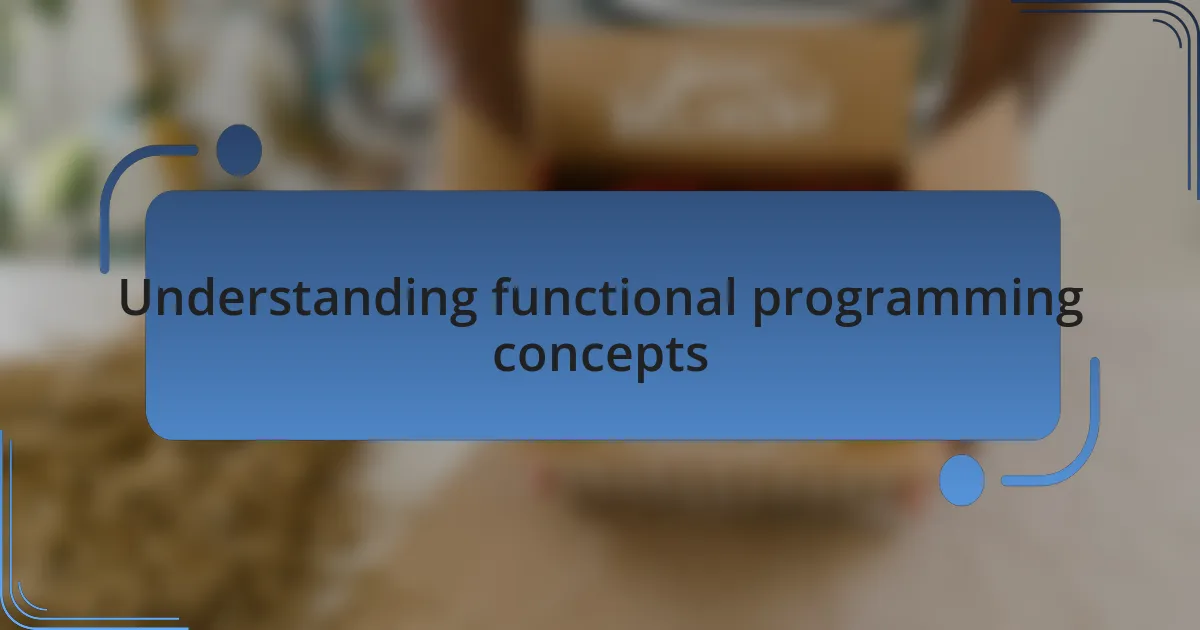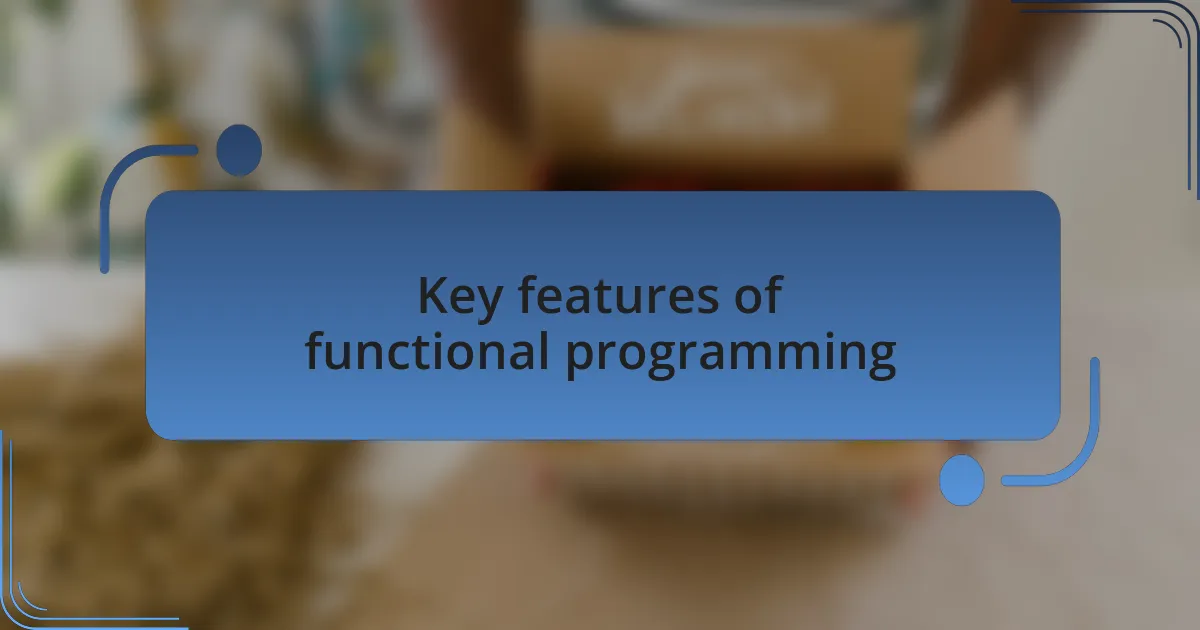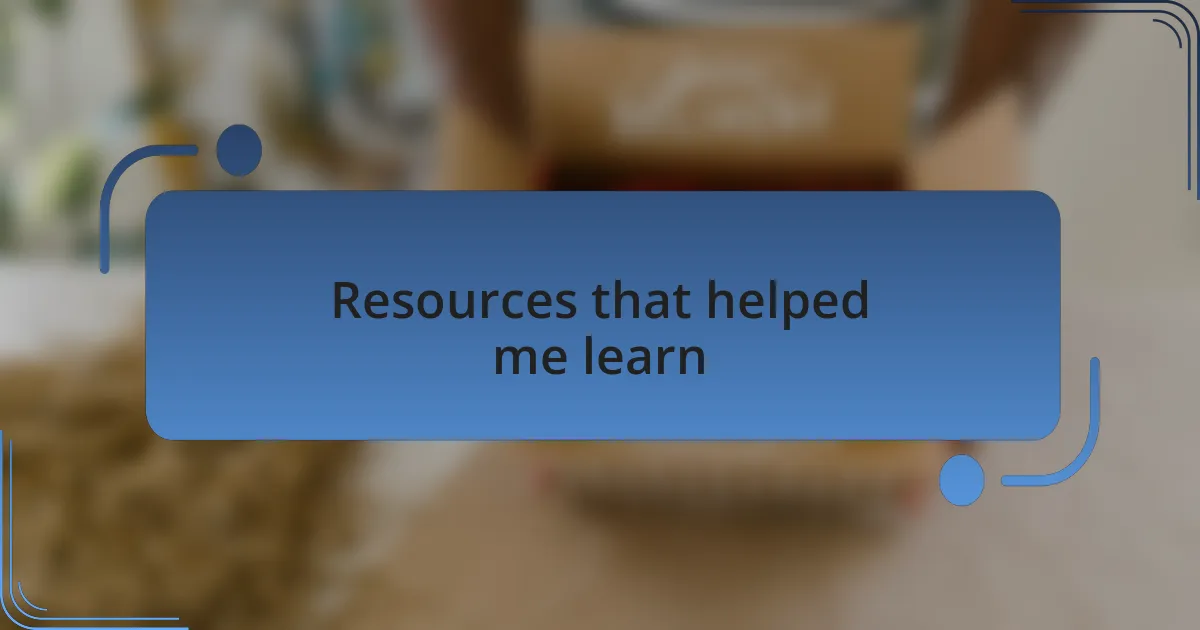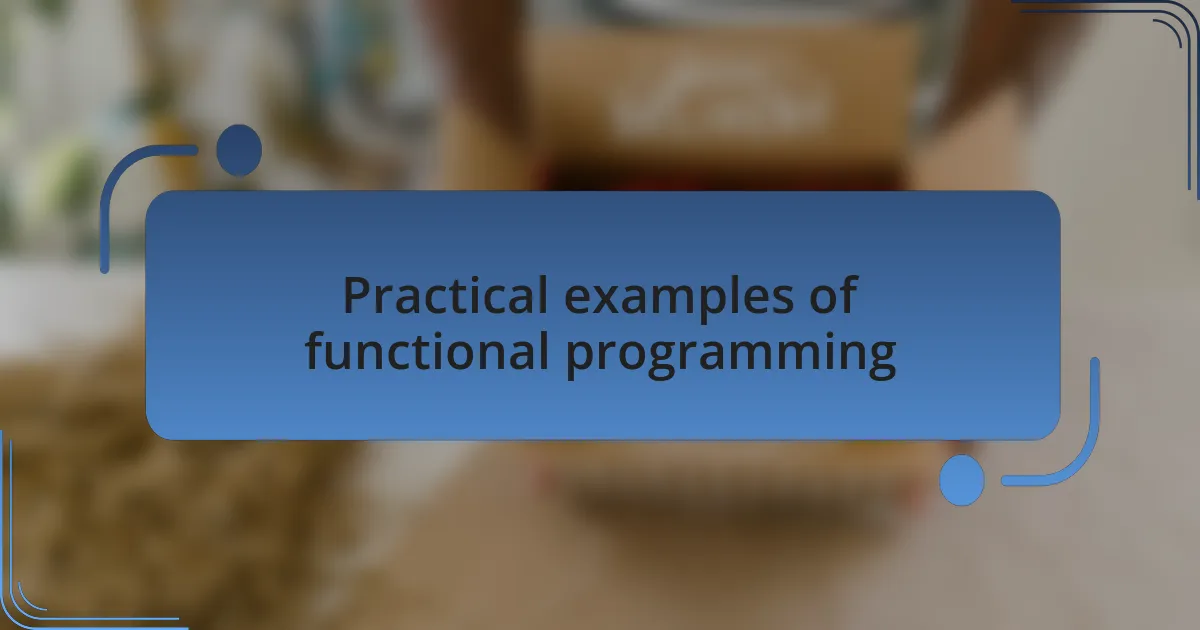Key takeaways:
- Functional programming emphasizes immutability and pure functions, leading to cleaner and more predictable code.
- Key features like first-class functions, closures, and higher-order functions enhance code reusability and simplify complex logic.
- Resources like “Functional-Light JavaScript” and hands-on online courses significantly contribute to understanding functional programming concepts.
- Practical applications, such as using map, filter, and reduce methods, demonstrate the power of functional programming in coding tasks.

Understanding functional programming concepts
Functional programming is a paradigm that treats computation as the evaluation of mathematical functions, avoiding changing-state and mutable data. I remember the moment when I first encountered higher-order functions, and it felt like a light bulb went off in my mind. The idea that I could pass functions as arguments or return them from other functions was revolutionary! It challenged my previous understanding of what programming could be.
One key concept I had to embrace was immutability. Initially, it felt restrictive, almost like taking away my favorite tools. But over time, I realized that by maintaining state integrity, I could write cleaner, more predictable code. Have you ever found yourself confused by the way data changes throughout your application? I know I have, and immutability helped clear that fog.
Another fascinating aspect of functional programming is the use of pure functions, which always produce the same output for the same input. This predictability was refreshing, and it reminded me of math class—something I enjoyed despite its challenges. When I started implementing pure functions in my projects, I found debugging became less of a hassle, allowing me to focus on building rather than fixing. Isn’t it liberating to think that a function could be so reliable?

Key features of functional programming
One of the standout features of functional programming is the concept of first-class functions. This means functions can be treated like any other variable, allowing them to be assigned to variables, passed as arguments, or even returned from other functions. I still remember the first time I used a function as an argument in a JavaScript method, and it felt like I was handed a new toolkit. How empowering it was to realize I could create more flexible and reusable code just by leveraging this feature!
Closures are another powerful aspect that I encountered on my journey. They allow functions to capture the context in which they were created, enabling them to access variables from their parent scope even after that scope has finished executing. When I first discovered closures, it was like unearthing a hidden compartment of treasures. Have you ever wished for a way to store state without relying on global variables? Closures provided that elegance, simplifying my code by encapsulating behavior and state together.
Lastly, higher-order functions serve as a cornerstone of functional programming. By taking one or more functions as input and producing another function as output, they enable a level of abstraction that can simplify complex logic. Implementing map, filter, and reduce in my projects transformed the way I processed data. I can’t tell you how satisfying it is to look at a clean, functional pipeline that processes data without relying on imperatives, making my code not only more concise but also far more readable. Doesn’t that approach feel like a breath of fresh air in a world often cluttered with complex logic?

Resources that helped me learn
When I embarked on my journey into functional programming, one of the first resources that truly resonated with me was a book titled “Functional-Light JavaScript” by Kyle Simpson. The way he broke down complex concepts into easily digestible pieces made it feel like I was having a conversation with a friend rather than just reading a textbook. I vividly recall spending evenings on my couch, completely absorbed in the examples, and it was like a light bulb went off each time I grasped a new idea.
Online courses also played a significant role in my learning process. Platforms like Udemy and Pluralsight offered hands-on coding exercises that challenged me to apply what I had learned in real time. I remember one particular module where I had to refactor a piece of imperative code into a more functional style. The transformation not only deepened my understanding but also ignited a sense of achievement that I still look back on fondly. Don’t you love it when a moment in your learning journey feels akin to solving a challenging puzzle?
Additionally, being part of online communities, like CodeNewbie and Stack Overflow, created a support network that was invaluable. Engaging with other learners helped illuminate the intricacies of functional programming that I found challenging. Sharing experiences and getting feedback often turned an intimidating topic into approachable discussions. It’s incredible how collaboration can enrich your understanding, wouldn’t you agree?

Practical examples of functional programming
When I first started coding with functional programming in JavaScript, I experimented with the map method. This simple function transforms arrays by applying a given function to each element. I clearly remember the satisfaction of transforming an array of numbers into an array of their squares. It felt like magic, effortlessly distilling a complex operation into a clean and elegant line of code. Wasn’t it thrilling to realize how powerful simplicity can be?
Next, I dabbled with higher-order functions, particularly the filter method. I had a project where I needed to extract specific user data from an API response. Writing the filter function was like honing a fine instrument; it allowed me to curate the data precisely. The feeling of control and clarity that came from using functional programming principles made coding not just easier, but also more enjoyable. Have you ever felt that rush when you finally achieve a clean solution?
In another project, I embraced immutability by using the reduce method to calculate the total price of items in a shopping cart. Instead of altering the original array, I created a new one, which not only made the code more predictable but also safer from bugs. I remember feeling something akin to pride when I saw how little code it took to achieve this complex operation. It made me appreciate how functional programming promotes a mindset of robustness and maintainability that I now strive for in every project. Isn’t it empowering to write code that stands the test of time?